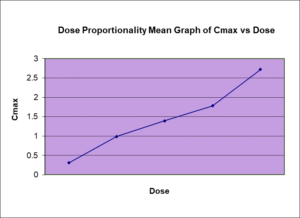Drug Development and Alternative Routes of Administration

Approved drugs can be administered via many routes of administration, including oral, intravenous, intramuscular, subcutaneous, sublingual, topical, intranasal, intraperitoneal, intrathecal, rectal, vaginal, intraarticular, and intraocular delivery. Different drug routes of administration are associated with distinct risks and benefits. These risks and benefits can vary in the:
-
- rate of onset of the drug’s effects;
- degree of patient autonomy; and
- reversibility of the drug’s action.
In some instances, even after the approval of a drug, challenges related to its route of administration may necessitate the investigation of an alternative route. More rarely, new chemical entities (NCEs) may also be assessed for alternative routes of administration; for example, if an NCE demonstrates low bioavailability with oral intake, a transition to a systemic route of administration may be considered.
Challenges Associated with The Route of Administration for Different Drugs
Below, we outline some of the potential concerns (and alternatives) concerning several of these routes of administration.
Oral Drugs
Low bioavailability – Some compounds, such as oligonucleotides, have low bioavailability when administered orally. As a result, a transition to a systemic route of administration may be required.
Pronounced first pass effect – The first pass effect refers to an orally administered drug being metabolized at a specific location in the body (most commonly the liver), resulting in a decreased concentration when the active drug reaches the systemic circulation or site of action. A particularly high first pass effect may require the identification of an alternative route of administration (such as a transdermal patch or intranasal or intralingual drug delivery).
Compliance issues in specific patient populations – Some patients may find it challenging to adhere to their therapeutic regimen. For example, patients with cognitive impairment may not remember when to take their medications. In such cases, switching from oral drug delivery to a transdermal patch with depot release may help resolve compliance issues.
Difficulties with drug absorption in patients experiencing nausea and vomiting – If a person is affected by nausea and vomiting, drugs taken orally may not be appropriately absorbed and, as a result, not reach therapeutic levels in the body. Therefore, drugs against nausea may be administered rectally to ensure adequate absorption and bioavailability.
Intravenous Drugs
Risk of too high bioavailability – If the intravenous application of a drug results in too high bioavailability, posing safety concerns, additional routes of administration may need to be identified. Depot transdermal patches or subcutaneous or intramuscular injections may be more suitable routes of administration for such products.
Inhaled Drugs
Challenges related to inhaler devices – In inhalation studies, not only is the drug important, but so is the inhaler device for the observed effects. This fact was illustrated in a study on inhaler technique errors in patients with asthma and COPD. The authors found that 66.7% of the participants executed at least one critical error in using their inhaler during a 14-month period.
In addition, the patient population that will be able to use an inhaler device should be defined carefully. For example, different inhaler devices require distinct degrees of strength to inhale the product.
Topical Products, Including Transdermal Patches
Challenges related to local tolerance – Individuals using topical products (both with local effects and intended to have systemic bioavailability) may experience local intolerance, such as irritation. To prevent this issue, skin irritation and sensitivity tests can be performed. These are fairly large studies in which investigators have to demonstrate that there is no irritation in response to the topical product and the drug it contains. If local tolerance problems cannot be resolved, additional routes of administration may need to be considered.
Deciding where to place topical products – The selection of a body location for applying topical products is also a key consideration. Generally, the selected area should not be subjected to extensive sweating and ensure optimal attachment and bioavailability.
The Potential for Intranasal Route of Administration to Expedite Drug Effects Onset
For cases in which the rapid onset of drug effects is critical, intranasal administration may present a valuable alternative. Its advantages include high vascularity of the nasal mucosa, an ability to bypass the first pass effect, a fast onset of action comparable to that with intravenous drug administration, and an opportunity to quickly reach the central nervous system via the olfactory epithelium. Therefore, intranasally delivered drugs have found valuable applications for the treatment of patients experiencing seizures, agitation, and trauma.
Phase 1 Clinical Trial Design for Studies on Alternative Routes of Administration
The design of Phase 1 clinical trials with changed routes of drug administration should always emphasize safety while efficiently laying the groundwork for more advanced stages of clinical drug development.
Safety is the utmost priority in Phase 1 clinical trial design – Comprehensive safety monitoring should be planned, including a predefined set of safety assessments. However, safety monitoring should also be adaptive and responsive to the incoming clinical trial data.
Pharmacokinetic modelling for dose selection – Changing the route of administration is expected to lead to alterations in the degree of bioavailability and time to reach the peak concentration. The pharmacokinetic profiles of drugs can be modelled to assess whether they may exceed a certain threshold when administered via an alternative route. This, in turn, may inform the selection of a starting dose for the Phase 1 clinical trial design. In other words, if there is potential for increased exposure to the drug, the study could begin with a lower dose.
Dose escalation studies –Dose escalation studies can be used to determine the safe dose range of a drug administered via an alternative route. This determination is particularly important when assessing a depot product containing a high dose of a drug. In such cases, it is imperative to consider whether the drug may enter the body too fast (a phenomenon known as dose dumping) and to adjust the dose accordingly.
Considering adverse events typical for different administration routes – Potential adverse events characteristic of a new route of administration should be considered when selecting the target population. For example, when an oral formulation is converted into a dermal one, the health and age of the skin may impact the effect of the drug, which may affect the decision regarding the age range of the target population.
Changing The Route of Administration and HAP studies
Human abuse potential (HAP) studies commonly investigate opioids, but may also focus on stimulants. These studies present particular complexities with respect to analyzing alternative routes of administration. Individuals who abuse drugs may attempt to ingest them via routes associated with a higher drug concentration achieved faster because their sense of a “high” would be more pronounced.
For example, many opioids may be delivered as a high dose in an extended-release formulation (such as a transdermal patch) with the intent to release the dose slowly over an extended period of time. However, a person who abuses an opioid may want to release the drug product as quickly as possible by chewing the patch or by extracting the opioid and injecting the extract. With regard to orally ingested opioids, individuals who abuse them may chew pills or crush pills and then snort them intranasally.
The development of abuse-deterrent formulations is considered one of the steps in reducing the risk of developing drug abuse. When changing the drug administration route with HAP, an in vitro laboratory and a pharmacy department usually become involved to determine whether the abuse-deterrent mechanisms are still intact.
Why Choose BioPharma Services for Your Phase 1 Studies on Alternative Routes of Administration?
BioPharma Services, Inc. is a full-service clinical research organization (CRO) with niche expertise in Phase 1 clinical trial design, including the design of studies on alternative routes of administration. Our strengths include the following:
Extensive expertise in Phase 1 clinical trial design – Our award-winning team has completed over 2,000 early-phase clinical trials. The team includes, among others, Ph.D.- level pharmacokinetic scientists and pharmacologists, who communicate closely with the study sponsors and the clinical team to operationalize the product and its delivery to the practice.
Scientific leadership – BioPharma’s scientific activities are led by the CSO, Dr. Oldenhof, who has 23 years of industry experience, including 20 years in Phase 1 clinical trials and HAP studies on NCEs. Dr. Oldenhof has worked on hundreds of Phase 1 trials, including studies on alternative routes of administration.
Utmost focus on safety – We prioritize the safety of study participants in all instances. Therefore, we have established two state-of-the-art Phase 1 clinical centers where we conduct our clients’ clinical trials.
Experience with numerous administration routes – Our core team and external collaborators have conducted studies with various routes of administration, including intraperitoneal drug delivery.
BioPharma Services, Inc., a Think Research Corporation and clinical trial services company, is a full-service Contract Clinical Research Organization (CRO) based in Toronto, Canada, specializing in Phase 1 clinical trials 1/2a and Bioequivalence clinical trials for international pharmaceutical companies worldwide. BioPharma has clinical facilities both in the USA and Canada with access to healthy volunteers and special populations.



